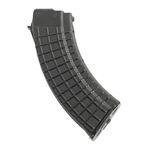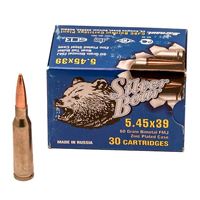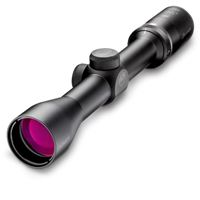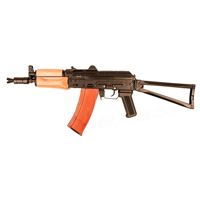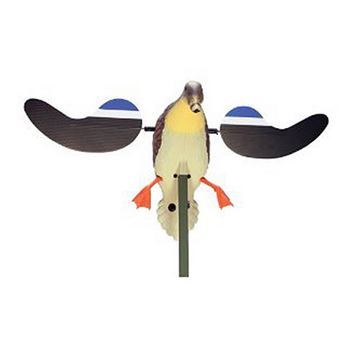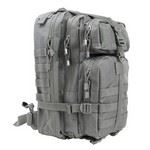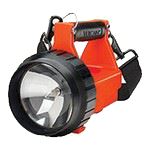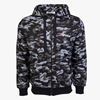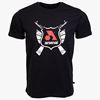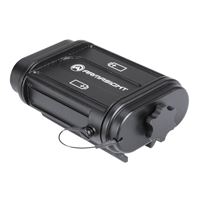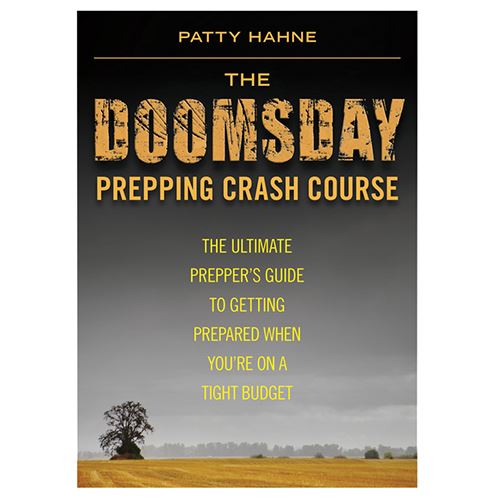Among the first police procedural dramas was Dragnet. Dragnet and Joe Friday were down to earth and presented the facts well. As a child, I enjoyed the series very much. Dragnet still has much to recommend. Professionalism and results are valued. Later, many of the prima donnas and flawed characters in TV shows were less interesting. Few would have lasted a minute in any agency I worked for.
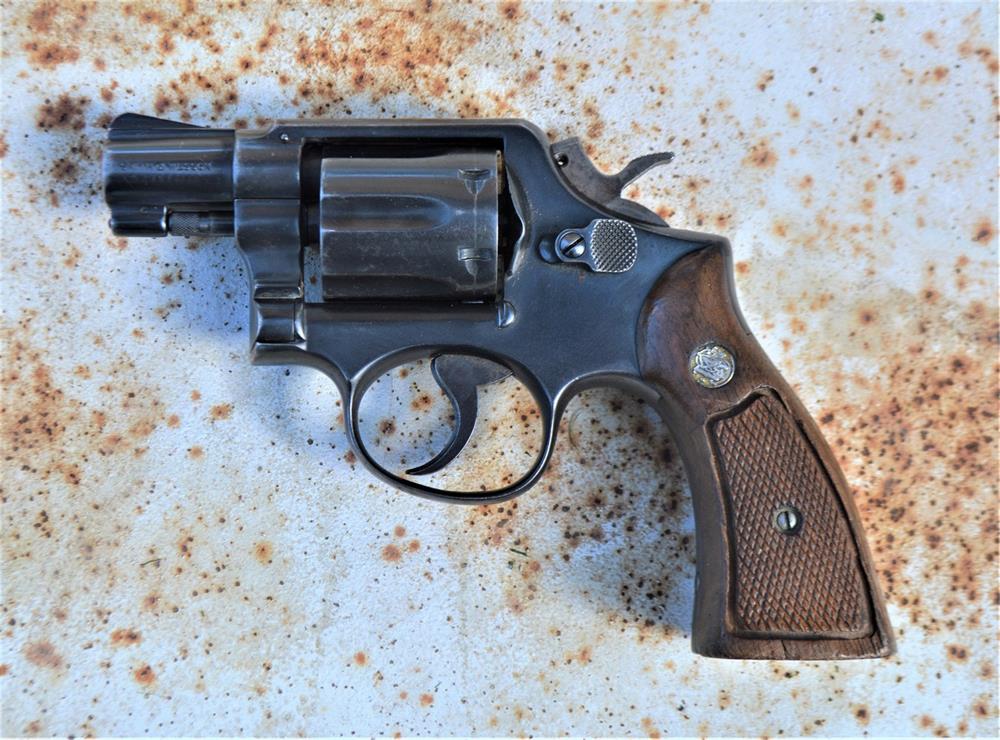
Some of the shows were basically good trash versus bad trash, and the good trash wins. Then, we had the original Criminal Minds. While they compressed a six-month investigation into an hour show, the original was very good. Then, the show devolved into ridiculous plots and became basically a showcase for personalities. The tired old plot of cop gets framed or cop gets divorce, and a lack of originality, seems to dog many shows after the first season. Kind of a soap opera.
The point of my dialogue is Dragnet was a very good show, and it set the pace for some of the better dramas such as Law and Order. As long as there are criminals and cases, there will be fertile ground for police dramas. If you can read a file and get the facts, then you can write a dramatization of it. And it doesn’t take a show of force akin to an Israeli police action against terror to get the job done. Joe Friday, like all LAPD detectives of the day, carried a .38 Special revolver.
I began my reading and research in the firearms world with well-written books by C. B. Colby. His work whetted my interest in firearms and most were written in simple prose that a nine year old could understand. As I progressed to reading Gun Digest, I learned a great deal about handguns. By age 11, I had a Crossman air pistol and had fired several of my grandfather’s revolvers.
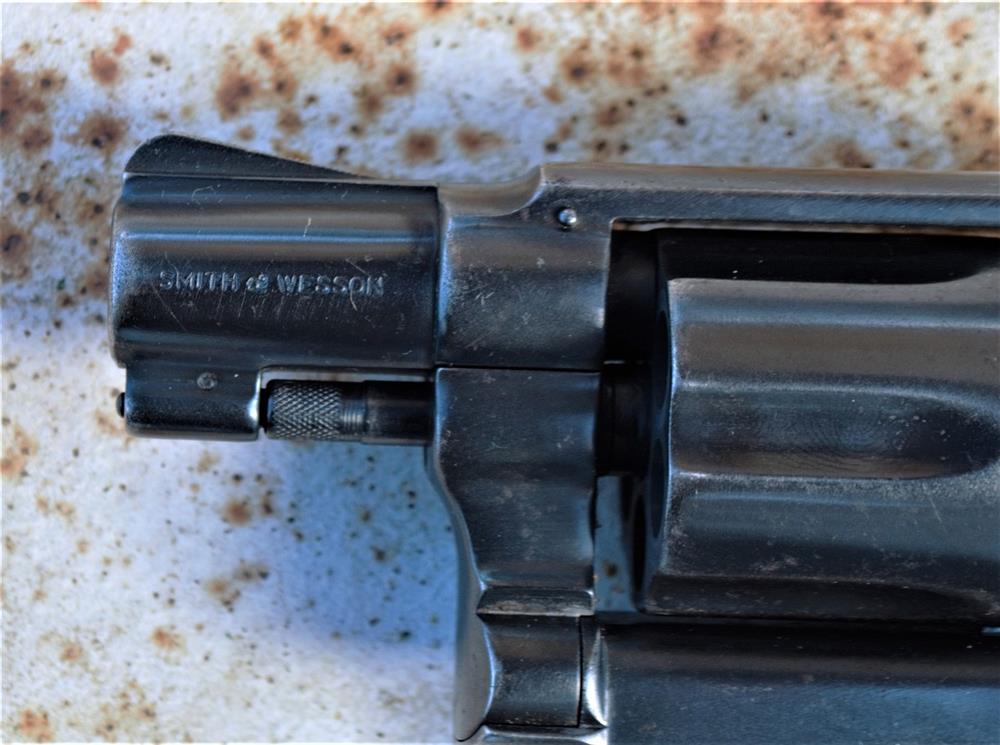
I knew that Joe Friday carried a Military and Police .38 Special with a two-inch barrel. This was one of the first short-barrel .38 Special revolvers, introduced just before Colt’s Detective Special. The Military and Police revolver is a K frame revolver. It is considerably larger than the J frame five-shot revolver. The Military and Police revolver features a full-size grip that makes control good for experienced shooters. The sights are excellent for a fixed-sight revolver. The action is smooth. While the smaller frame Detective Special has much merit, the Military and Police snub nose is a fast handling and effective revolver.
I wanted one of these revolvers after seeing Joe Friday draw and use his on Dragnet. Very seldom was the big Smith used, but when it was, Friday fired a single shot and got the job done. The lumbering old 200-grain Super Police load was standard for the LAPD in those days. While Friday’s gun fired blanks, the LAPD fired many Super Police loads in the line of duty.
I have owned a good number of J frame revolvers, primarily for use as a backup, and somehow I hadn’t added a full-size Military and Police .38 Special revolver with two-inch barrel to my collection. I kept my eye open for an example and actually ran across one about three years ago at a fair price. This was the first and last time I entered this shop. (It is now out of business.)
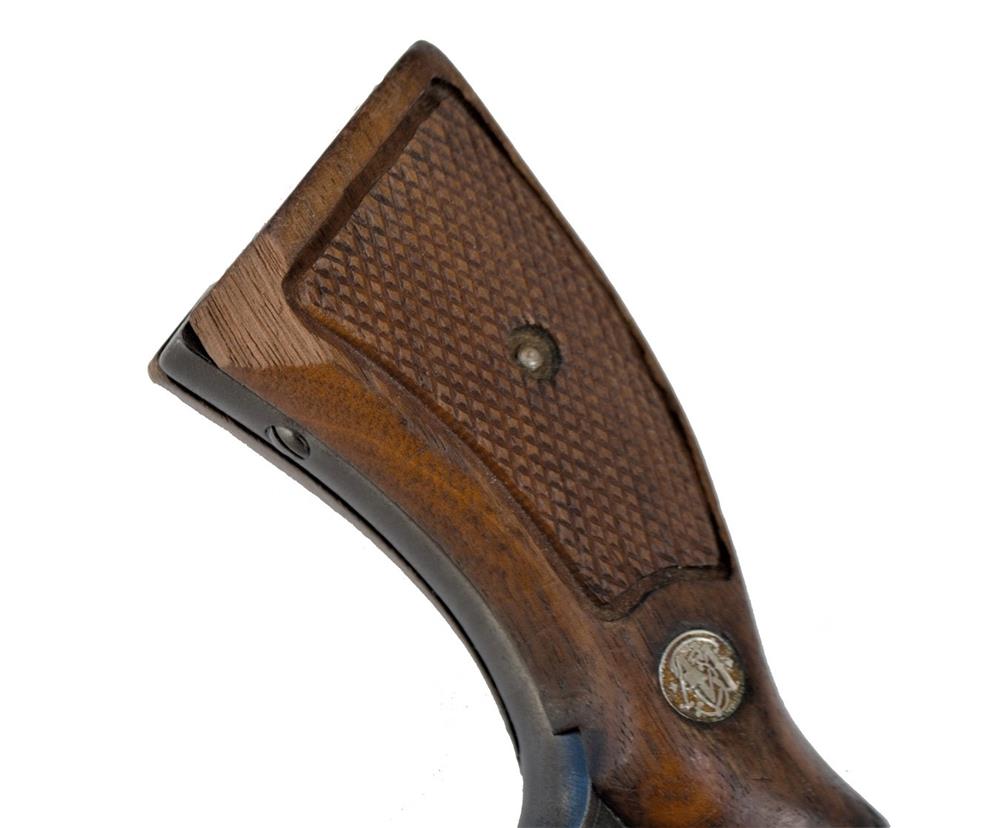
I saw an older Smith and Wesson two-inch barrel Model Ten with the desirable diamond grips. The revolver had a bit of wear, just like I like. A nice looking lady of perhaps 40 years age handed me the revolver and we were within a few dollars of making the deal. A crusty overweight sourpuss (the owner) came to stand beside his daughter. I held the gun up to the light looking it over and remarked, ‘Hey this is Joe Friday’s gun.’ Sourpuss said, ‘I don’t care who in the hell pawned it, it’s mine now.’ Seldom have I met such a solid combination of ignorance, disdain for a customer, and a lack of personality. I smiled at his lovely daughter and said ‘Let me think about it.’ I never graced the place again.
A few weeks ago, I saw another of the now-hard-to-find revolvers. The piece was in one of my favorite shops, and it was marked at a fair price. I managed to whittle a few dollars off the price and took the piece home, cracked grip worn muzzle and all. I didn’t want a new in the box example at all—it wasn’t in the budget. The action is tight and a check of the serial number showed the revolver left the factory in 1972. The bluing was decent and the chip off the bottom of the grip didn’t affect firing. Who knows perhaps someone had used the gun butt as a kosh and buffaloed some deserving SOB.
The Smith and Wesson Military and Police is a trouble free revolver. You could bypass every new revolver in the gun case at a well-stocked gun shop and pick up a new Military and Police revolver and have a handgun that will last you for many years of heavy use.
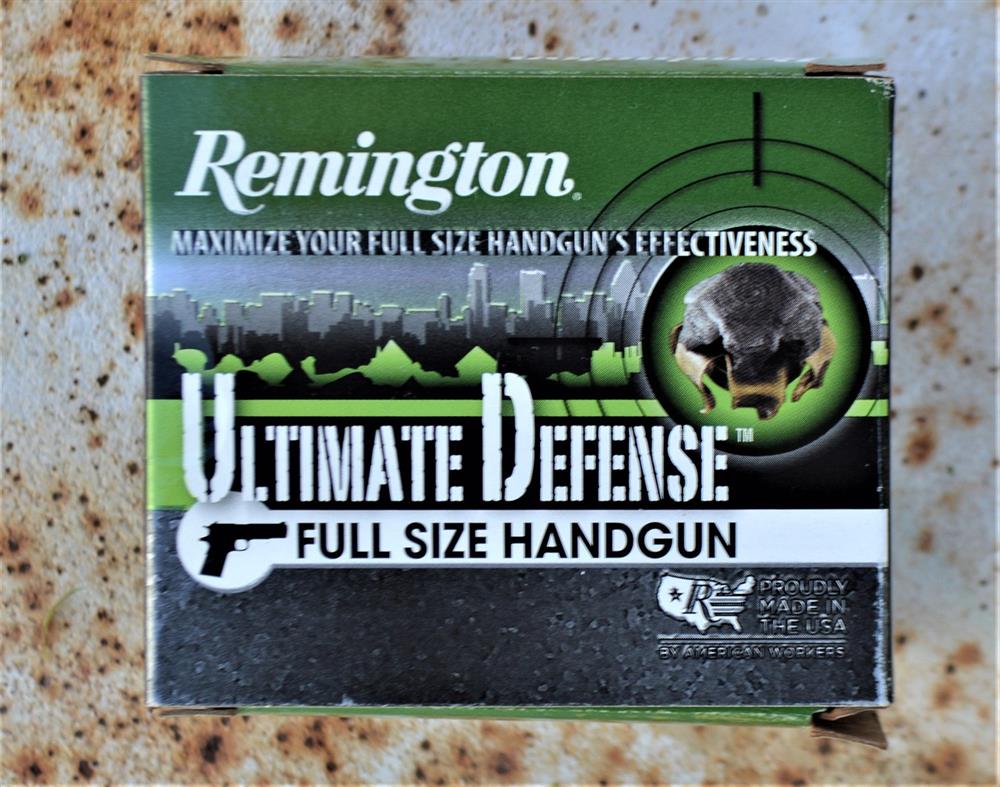
I took the revolver to the range and loaded up the classic 158-grain RNL in the Remington Wheelgunner line. The revolver lines up on target quickly. Accuracy is good. The K frame really soaks up recoil. At 10 yards, it was no mean feat to put six rounds into the X ring firing double action. Of course, we don’t carry RNL loads. The Remington lead semi-wadcutter hollow point is soft enough to plump up to .60 even at 820 fps (the clocked velocity from the Smith’s short barrel).
There was more recoil with the 158-grain load, but the big Smith and Wesson remained controllable. After firing a number of double action pairs, I appreciated Sgt. Friday’s choice. This is a good handling revolver. The two-inch barrel allows good concealment—even when worn on the belt—as a relatively short covering garment is all that is required.
Next, I tried a few shots at a long 20 yards. Bracing against a barricade and firing five rounds (single action), all five went into less than two inches- with three in 1.5 inches. These were among the most accurate revolvers to leave Smith and Wesson. Since the initial outing, I have also fired a number of handloads using heavy cast bullets from Matt’s Bullets. A hard cast 200-grain bullet at 800 fps thumps the steel plates hard. Not recommended for J frame revolvers.
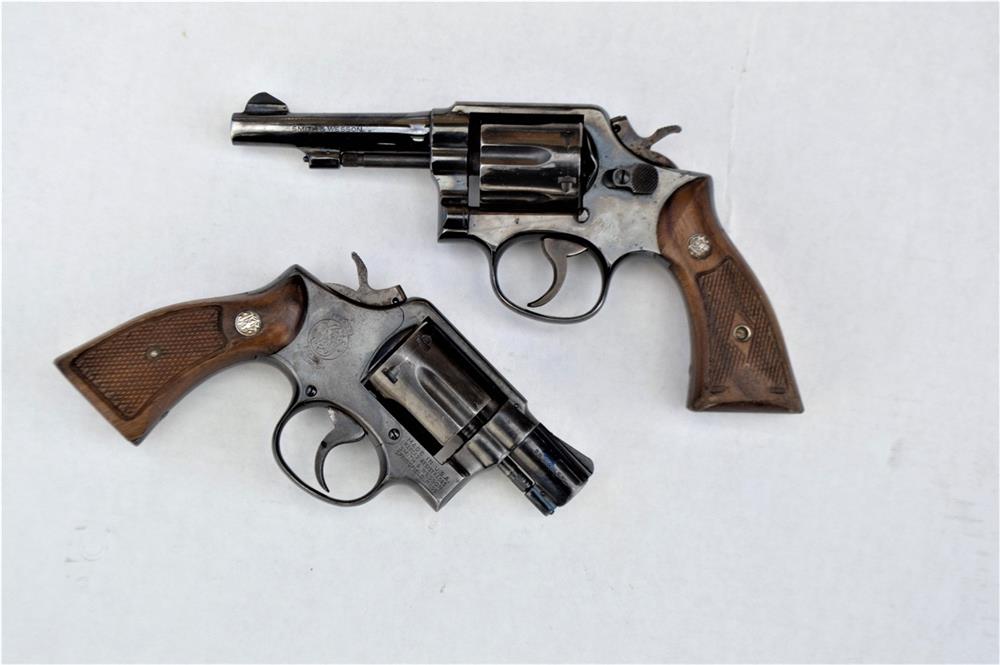
Joe Friday carried his Smith in a crossdraw holster. My research indicates this was a Lewis holster, a well-made scabbard that is long out of production. I have on hand a spring-loaded G Man crossdraw from the 1940s or so. The Smith and Wesson fit well, and the draw was excellent. The holster has become loose with the years and that would not do.
A modern Wright Leather Works crossdraw is superior to most anything Joe Friday would have owned. The Smith and Wesson Military and Police is a good fit for this holster, originally intended for a Smith and Wesson Combat Magnum with a 2.5-inch barrel. The Wright Leather Works holster holds the gun butt in the perfect position for a rapid presentation.
In the end, I like this combination very much. I am certain I will be using the Smith and Wesson .38 when hiking or other low stress activity and probably carrying it concealed from time to time. I would rather have this vintage Smith and Wesson than perhaps half of the guns I see in shooting classes. And that’s the facts, just the facts.


